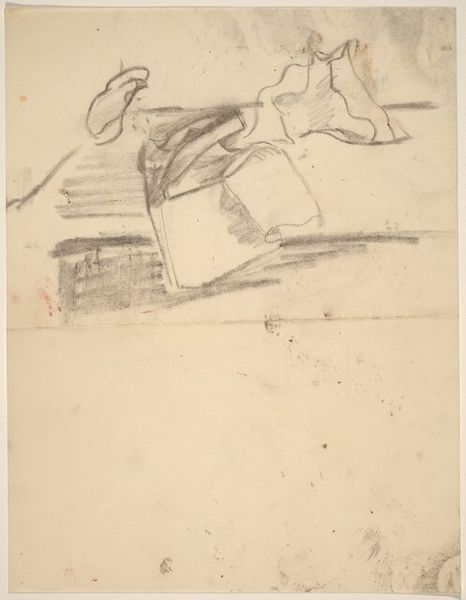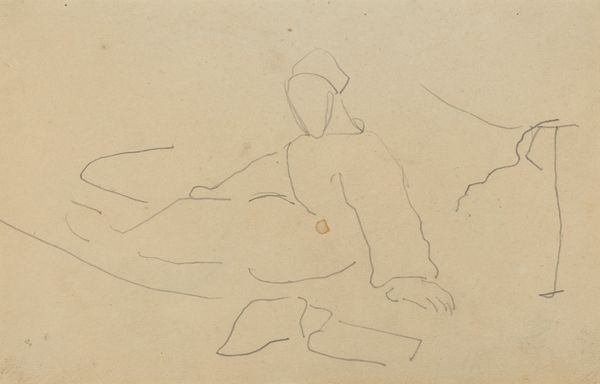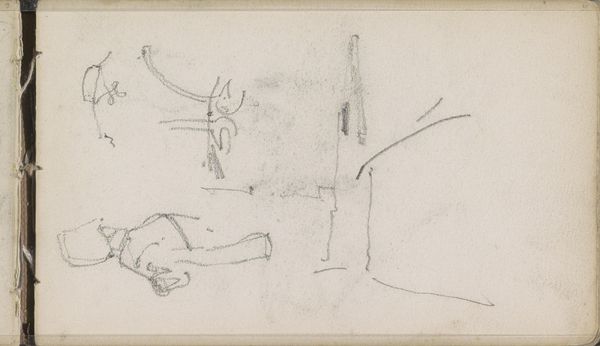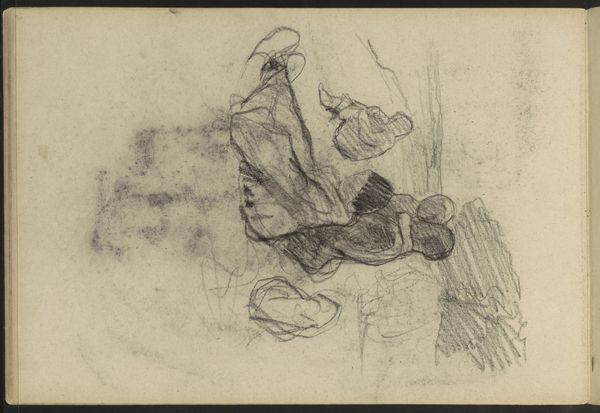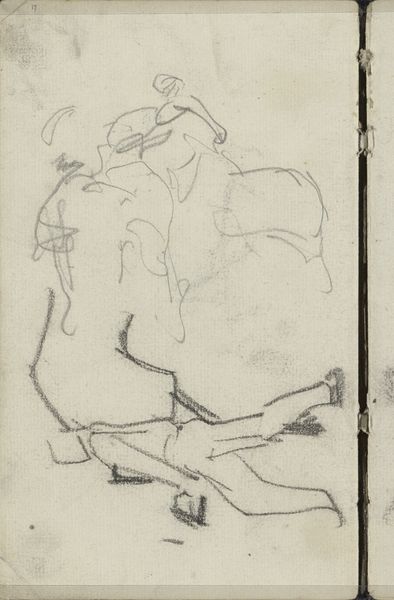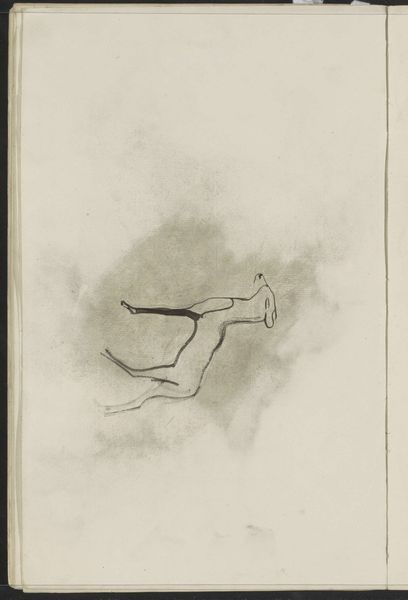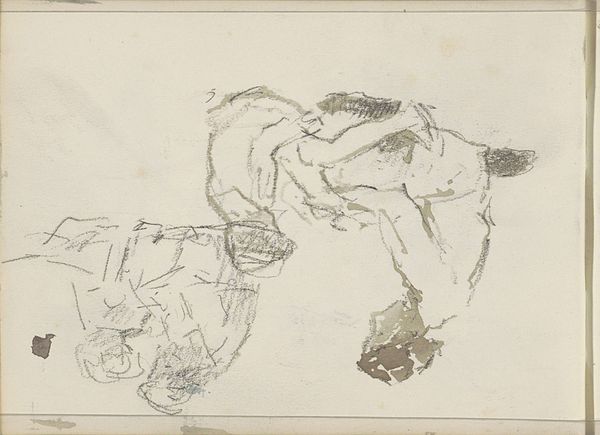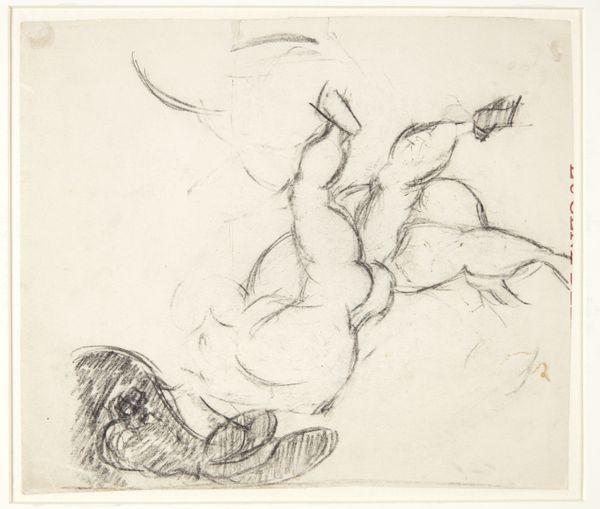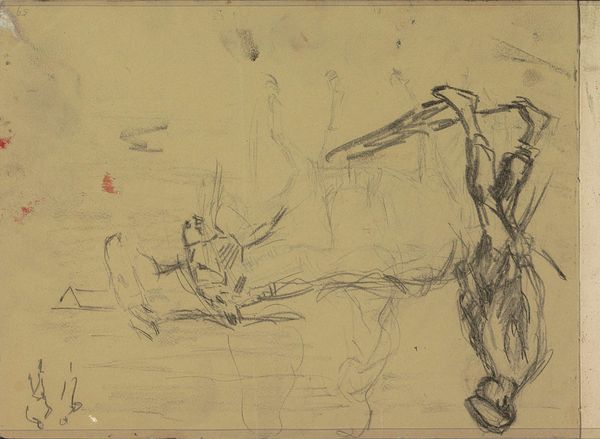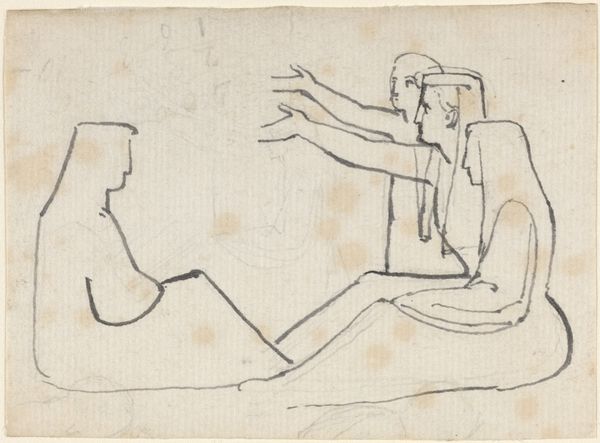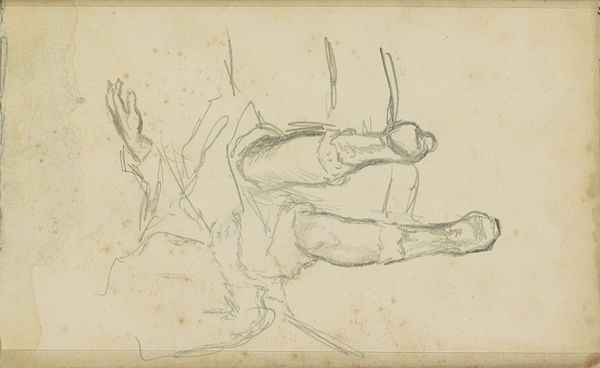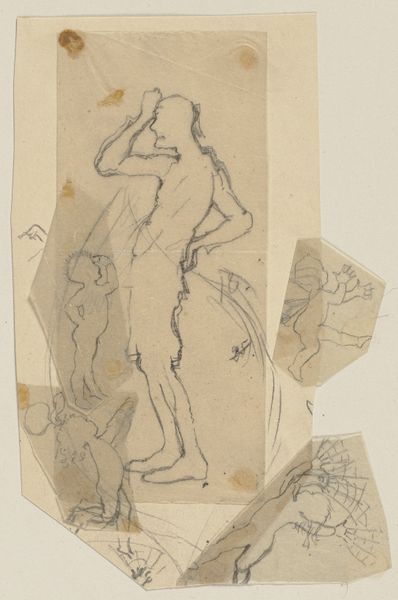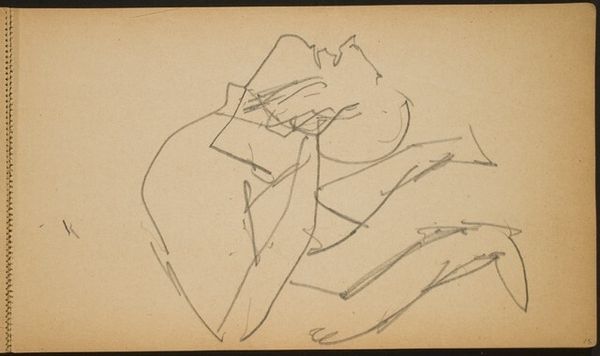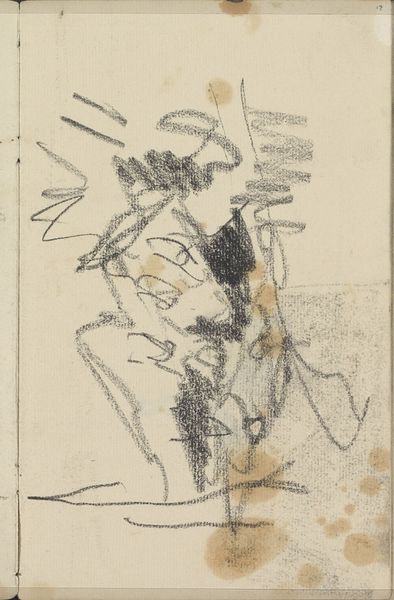
drawing
#
drawing
#
light pencil work
#
water colours
#
ink paper printed
#
incomplete sketchy
#
ink drawing experimentation
#
underpainting
#
watercolour bleed
#
watercolour illustration
#
sketchbook art
#
watercolor
Dimensions: overall: 26.5 x 36.1 cm (10 7/16 x 14 3/16 in.)
Copyright: National Gallery of Art: CC0 1.0
Curator: This is Franz Kline’s “Reclining Figure Facing Left,” from the 1940s, a drawing rendered with watercolor on paper. Editor: My immediate thought? A ghost in repose. It's so ethereal, all these faded blues and hints of a figure barely tethered to the page. Curator: It strikes me more as an unfolding, perhaps even a revealing of the figure rather than a ghostly image. Reclining figures carry echoes of classical reclining nudes, a sort of Venus. The abstraction transforms it but those associations linger. Editor: Interesting that you see classicism. To me, the watercolor technique—how the pigment bleeds and stains the paper—speaks of chance, the fluidity of process. Did Kline carefully consider the paper, its absorbency, its texture? These factors were vital to achieving this image. Curator: Absolutely, and consider what reclining means psychologically: vulnerability, introspection, a pause. Kline invites us into a space of intimate reflection. The watery medium contributes to this emotional tonality, as water has strong connections to purification. Editor: Agreed, but let’s consider the social context, too. Kline, amidst post-war anxiety, uses accessible materials, rejecting traditional grandeur. It suggests a shift toward a democratized art-making, the value inherent in process rather than precious materials. It is experimentation in the very real material conditions of his time. Curator: Indeed. Kline’s abstraction may signal a crisis in representation, or a shifting identity of body and figure. We are presented with the symbolic weight of the absent nude. We’ve inherited classical forms, the female nude particularly, but they no longer entirely suit or reflect contemporary life. Editor: So much hinges on the handmade quality of it, even. A rejection of industrial reproduction and its alienation effects, a quiet assertion of the individual’s touch in the face of encroaching mechanization. Curator: Thinking about the layers of meaning compressed within what appears to be a very simple sketch is truly illuminating. It reveals that drawing holds greater communicative power. Editor: Right—process reveals layers beyond representation. It encourages new conversations regarding art, materiality, and the self.
Comments
No comments
Be the first to comment and join the conversation on the ultimate creative platform.
